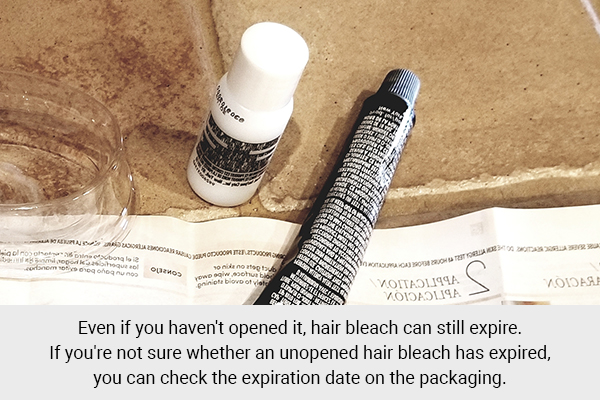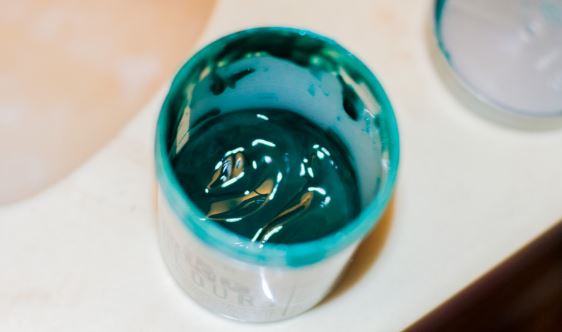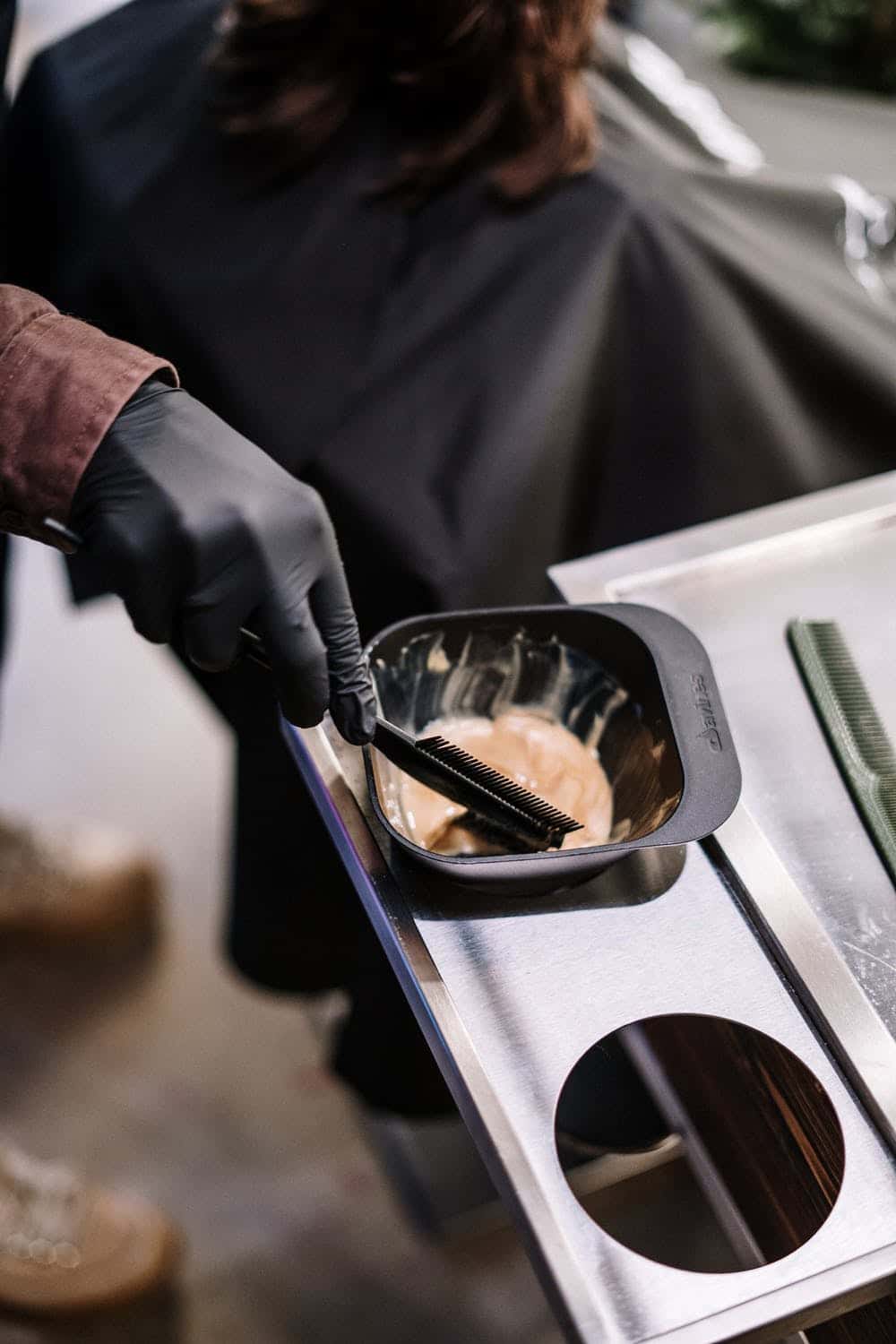Does unopened hair color expire

The longevity of cosmetic products, particularly those involving intricate chemical formulations like hair color, is a common concern among consumers. A prevalent query revolves around the viability of hair color products that have remained sealed and untouched. The definitive answer is that, yes, unopened hair color products do expire, and understanding the underlying reasons for this degradation is crucial for ensuring both efficacy and safety. The chemical integrity of these products is not indefinite, even when hermetically sealed, due to a complex interplay of inherent chemical instability and environmental factors.
The Intricate Chemistry of Hair Color
To comprehend why unopened hair color products degrade, it is essential to delve into their fundamental composition. Hair color formulations are sophisticated mixtures designed to achieve specific chemical reactions on the hair shaft. Key components typically include:
- Developer: This is usually a hydrogen peroxide solution, which acts as an oxidizing agent. Its primary role is to open the hair cuticle, lighten the natural pigment, and facilitate the penetration of color molecules.
- Colorant: This component contains dye precursors (small, colorless molecules that develop into larger colored molecules when oxidized) and sometimes pre-formed direct dyes. Ammonia or monoethanolamine (MEA) is often present to raise the pH of the hair, swelling the cuticle and allowing the dye to enter.
- Conditioners and Stabilizers: These ingredients are added to protect the hair during the coloring process, improve texture, and maintain the stability of the overall formulation.
- Preservatives: Chemical agents included to inhibit microbial growth.
The effectiveness of a hair color product hinges on the precise balance and reactivity of these components. Any alteration to this delicate chemical equilibrium can compromise the product’s performance.
The Mechanisms of Degradation in Unopened Hair Color
Even without direct exposure to air, several processes contribute to the degradation of hair color products over time:
- Oxidation of the Developer: Hydrogen peroxide, the primary ingredient in the developer, is inherently unstable. Even in a sealed container, it can slowly decompose into water and oxygen. This process, known as auto-oxidation, is accelerated by heat, light, and the presence of trace metals. As the peroxide degrades, its concentration decreases, leading to a weaker developer. A weakened developer will be less effective at lifting natural hair pigment and activating the dye precursors, resulting in poor color uptake or an inability to achieve the desired shade.
- Chemical Instability of Dye Precursors: The dye precursors in the colorant are complex organic molecules. Over extended periods, these molecules can undergo various chemical changes, such as polymerization, hydrolysis, or oxidation, even in the absence of an external activator. These reactions can alter the molecular structure of the dyes, preventing them from developing into the intended color or causing them to produce unexpected hues. Heat and light are significant catalysts for these degradation pathways.
- Volatilization of Active Ingredients: Components like ammonia, crucial for raising the hair’s pH, are volatile. While packaging aims to be airtight, no seal is perfectly impenetrable indefinitely. Over many months or years, minute amounts of volatile compounds can escape, subtly altering the pH balance of the colorant. A shift in pH can profoundly impact the efficiency of the dyeing process, affecting cuticle penetration and dye development.
- Degradation of Stabilizers and Preservatives: The chemicals designed to maintain the product’s stability and prevent microbial growth also have a finite lifespan. Over time, these stabilizers and preservatives can themselves degrade, becoming less effective. This can lead to further chemical instability within the product or, in rare cases, allow for microbial contamination, even in an unopened state, if the seal is compromised at a microscopic level.
- Packaging Permeability: While sealed, most hair color products are packaged in plastic tubes or bottles, which are not entirely impermeable. Plastic materials can allow for a slow, albeit minimal, exchange of gases (like oxygen) with the external environment. This gradual permeation contributes to the oxidative degradation of sensitive ingredients, particularly the developer. Opaque packaging helps mitigate light exposure, but gas exchange remains a factor.
Consequences of Using Degraded Hair Color
The use of an expired, even if unopened, hair color product carries several risks and drawbacks:
- Unpredictable Color Results: This is the most common outcome. A weakened developer may not lighten the hair sufficiently, leading to dull, muddy, or significantly darker results than intended. Degraded dye precursors might not develop properly, resulting in patchy color, an entirely different shade, or no color change at all. The chemical balance required for precise color formation is disrupted.
- Reduced Efficacy: The product may simply fail to perform its intended function, leading to wasted time, Do Hair Stylists Get A Discount On Dyson An In Depth Look At Professional Procurement effort, and money. Gray hair coverage, for instance, might be incomplete or non-existent.
- Increased Risk of Hair Damage: An altered pH or the presence of degraded chemicals can make the product more harsh on the hair. This can lead to excessive dryness, breakage, or a compromised hair texture.
- Potential for Scalp Irritation or Allergic Reactions: Degraded ingredients can sometimes become more sensitizing or irritating to the scalp. While patch tests are always recommended, an expired product might elicit an unexpected reaction even if previous applications of a fresh product were tolerated.
- Changes in Product Consistency: The product might appear separated, lumpy, watery, or have an unusual texture, making it difficult to mix and apply evenly. This physical change is often a visible indicator of chemical degradation.
Factors Influencing Shelf Life
The actual shelf life of an unopened hair color product can vary based on several factors:
- Manufacturer’s Expiration Date: This is the most reliable indicator. Manufacturers conduct stability testing to determine how long their product remains effective and safe under normal storage conditions.
- Manufacturing Date: If an expiration date is not explicitly stated, a manufacturing date can provide a reference point. Most unopened hair colors have a shelf life of 2-3 years from the manufacturing date.
- Storage Conditions: This is paramount. Products stored in a cool, dark, and dry environment, away from direct sunlight and extreme temperature fluctuations, will retain their integrity longer. Heat accelerates chemical reactions, while light can degrade light-sensitive ingredients. Bathrooms, due to their humidity and temperature swings, are often suboptimal storage locations.
- Type of Hair Color: Permanent, demi-permanent, and semi-permanent dyes may have slightly different stability profiles due to variations in their chemical compositions and mechanisms of action.
Identifying a Degraded Product
Even if an expiration date is not immediately visible or has passed, certain signs can indicate that an unopened hair color product is no longer viable:
- Visual Changes: Look for any discoloration of the product itself (e.g., developer turning yellow or brown), separation of ingredients, or the presence of lumps or solid particles.
- Olfactory Changes: An unusual or excessively strong chemical odor, or a distinct change from its original scent, can signal degradation.
- Consistency Alterations: If the product feels unusually thick, thin, gritty, or watery when dispensed, its chemical structure has likely been compromised.
It is important to note that the absence of these visible signs does not guarantee the product’s efficacy or safety if it is significantly past its recommended shelf life. Chemical changes can occur at a molecular level without immediately manifesting in obvious physical alterations.
FAQs by does unopened hair color expire
What is the typical shelf life of an unopened hair color product?
Unopened hair color products generally possess a shelf life of approximately two to three years from the date of manufacture. This duration is contingent upon proper storage conditions and the specific formulation of the product.
Can extreme temperatures affect the longevity Straight Hair Hairstyles Women An Exploration Of Elegance And Versatility of sealed hair dye? Yes, extreme temperatures significantly impact the stability of sealed hair dye. High temperatures accelerate chemical degradation, particularly the breakdown of hydrogen peroxide and dye precursors. Freezing temperatures can also alter the product’s consistency and chemical balance, potentially rendering it ineffective.
Are there specific ingredients that degrade faster than others within an unopened hair color kit?
Indeed, certain components are more prone to degradation. Hydrogen peroxide in the developer is highly susceptible to decomposition. Dye precursors, being complex organic molecules, can also undergo chemical changes over time. Volatile components like ammonia can slowly escape, altering the product’s pH.
Is it safe to use hair color past its expiration date if it looks normal?
No, it is not advisable to use hair color past its expiration date, even if no visible signs of degradation are present. Chemical changes, such as the reduction in developer potency or alteration of dye molecules, can occur at a molecular level without obvious physical manifestations, leading to unpredictable results or potential adverse reactions.
Does the type of packaging influence how long hair color remains viable?
Yes, packaging type plays a role. Opaque packaging helps protect light-sensitive ingredients from photodegradation. Airtight seals and materials with low gas permeability (e.g., glass, certain plastics) can slow down oxidation processes by minimizing oxygen ingress, thereby extending the product’s viability.
Tips by does unopened hair color expire
Always verify the manufacturing or expiration date printed on the hair color packaging before purchase and use. Storage of hair color products in a cool, dark, and dry environment, away from direct sunlight, heat sources, and areas with fluctuating temperatures, is paramount for preserving chemical integrity. Avoid acquiring products lacking clear date labeling, as this prevents accurate assessment of their age. When any doubt exists regarding the product’s freshness or viability, discarding it and obtaining a new, unexpired product is the most prudent course of action. Furthermore, conducting a strand test and a patch test is always recommended, particularly if there is any uncertainty about the product’s age or condition, to assess both color outcome and potential skin sensitivity.
Conclusion by does unopened hair color expire
The assertion that unopened hair color products do expire is unequivocally supported by scientific principles governing chemical stability and material science. The inherent chemical instability of components such as hydrogen peroxide and dye precursors, coupled with the subtle yet persistent influence of environmental factors like temperature, light, and even minute oxygen permeation through packaging, collectively contribute to the degradation of these formulations over time. Understanding these mechanisms underscores the critical importance of adhering to manufacturer-provided expiration dates and proper storage guidelines. This vigilance ensures not only the achievement of desired hair coloring results but, more significantly, mitigates the risks of unpredictable outcomes, hair damage, or adverse scalp reactions. Ultimately, the integrity of a hair color product is finite, necessitating a conscientious approach to its shelf life for safe and effective application.







More suggestion: Top Hairstyles For Men A Comprehensive Guide To Modern Grooming